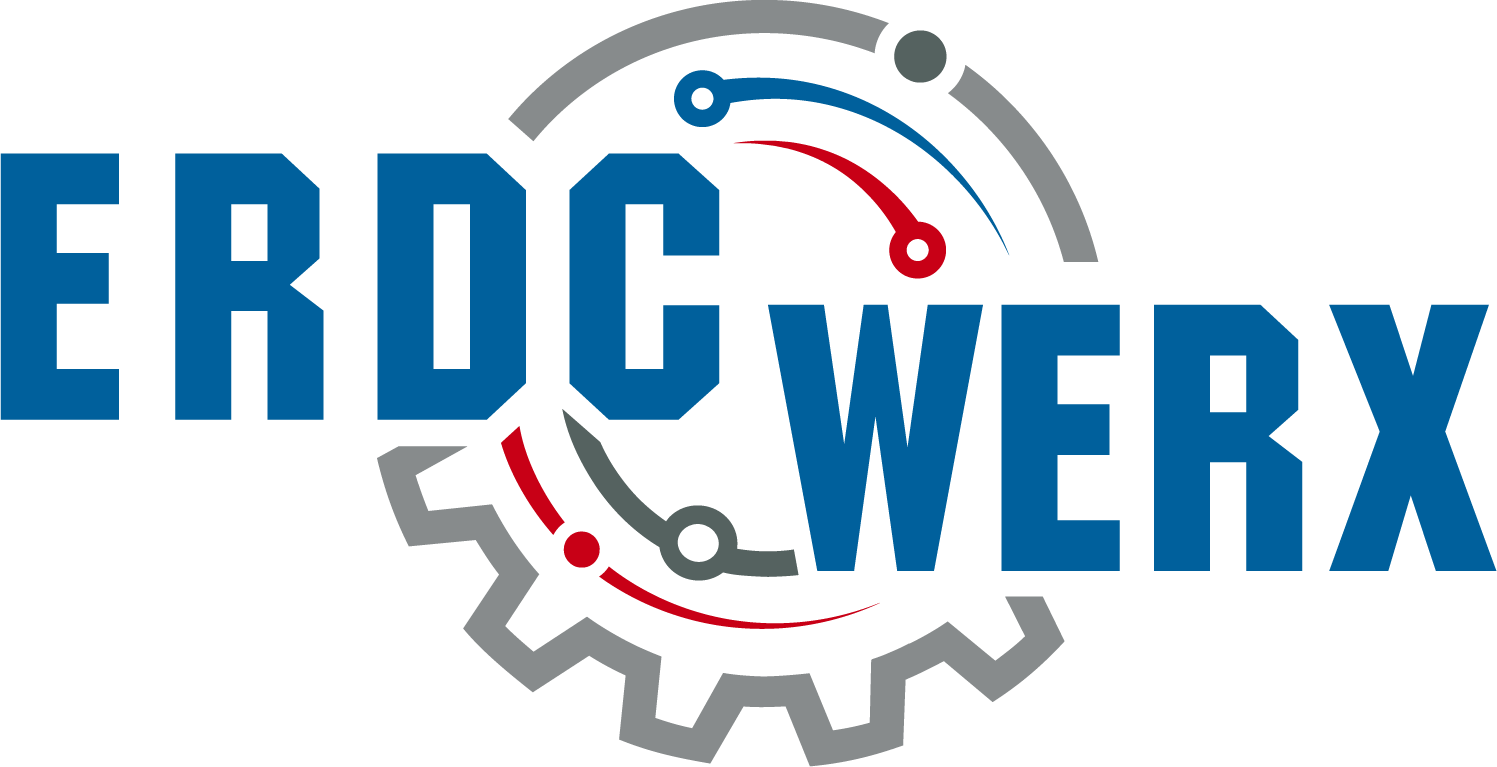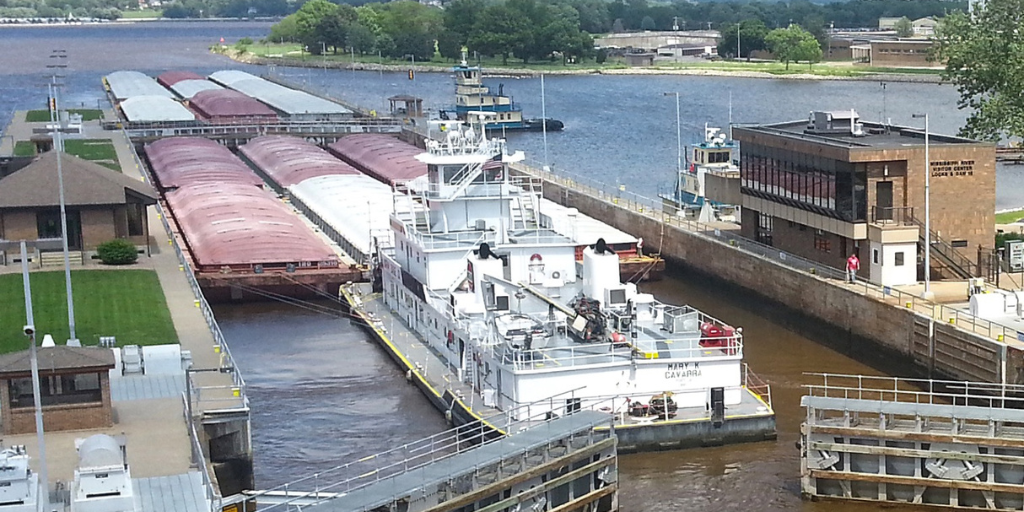Overview
ERDCWERX, in collaboration with the U.S. Army Engineer Research and Development Center (ERDC), seeks to identify and understand hands-free mooring technologies that improve the safety and efficiency of navigation locks on inland waterways.
Existing mooring practices require the deck-hands onboard the vessel and, in some cases, the lock staff, to handle the mooring lines to ensure secure connections (typically two) between the vessel and either the floating mooring bitts or stationary check pins.
The line tension is important during a lockage. The tension forces in the lines are a result of forces called Hawser forces. Hawser forces are the forces acting on the vessel during a filling or emptying operation from a change in the slope of the water surface in the lock. This parameter is dependent on the lock design and how quickly the lock is filled or emptied. The Hawser forces are then transferred to the mooring lines as the mooring lines work to keep the vessel steady. During a lockage, if the mooring line tension becomes too large, the lock operator must decrease the amount of water entering or exiting the lock to decrease the Hawser forces. Operating the lock in this way is less efficient and could cause damage to the mechanical components of the lock.
Project Objective
The objective of this two-phased capability assessment is to identify and understand available hands-free mooring (HFM) technology. HFM should reduce or remove a deckhands’ and lock staff personnel’s interaction with mooring lines while a vessel is traveling through a U.S. Army Corps of Engineers (USACE) navigation lock. Any reduction to a person’s interaction with mooring lines during a lockage would likely improve navigation safety and efficiency of lockage operations.
The U.S. Army Engineer Research and Development Center (ERDC) is tasked with determining the feasibility of a hands-free mooring (HFM) system for the 200 plus USACE navigation locks on the inland waterways. It is important that ERDC receive submissions that introduce the latest technologies to improve safety and efficiency of lockages.


Requirements
ERDC invites white papers that introduce the available technologies to improve the safety and efficiency of lockages for navigation locks on inland waterways. Proposed solutions can be an advanced idea or can build on existing technology. All potential solutions will be considered. The proposed HFM system must meet the following requirements:
- requires little to no direct contact with any persons, including the deckhands and lock staff
- safely limits both longitudinal and transverse motion of the vessel during a lockage
- accommodates lock lifts from 0 to ~110 feet
- accommodates various freeboard heights (distance from waterline to main deck) (~6-in to ~11-ft)
- accommodates various barge configurations (empty/loaded, 1 barge wide x 2 barges long, 2 barges wide x 3 barges long, etc.)
- can operate regardless of barge side surface condition (rust, holes, uneven surfaces etc.)
- can attach to existing mooring locations on barges or existing parts of barge
- able to be operated remotely
- leaves at least two floating mooring bitts available, one on both ends of the lock, to maintain the ability to moor traditionally
Note: Submissions should NOT include confidential or proprietary details. Submissions may be shared with other ERDC teams if there is an apparent fit with other ERDC projects.
- ERDC seeks to enter into non-FAR or FAR-based agreements with Industry, Academic, and National Lab partners whose solutions are favorably evaluated by ERDC Subject Matter Experts. As such, this project is considered competitive in the same manner as a Broad Agency Announcement (BAA) or Commercial Solutions Opening (CSO), and solutions will be evaluated independently of one another primarily for technical merit. This serves dually as notification of the intent to research the feasibility of an agreement under 10 U.S. Code, Section 2371b and/or Section 2371b(f), and as notice of pre-solicitation activities IAW FAR 5.204. The requirements of DFARS 215.371-2 do not apply to acquisition of innovative items, technologies, or services under a CSO.
Expected Result
Phase I: ERDC gains an understanding of the market, assesses the applicability of new and existing HFM system for USACE locks on the inland waterways, and ascertains the experience and capability of the submitting parties. Down-selected parties will be considered for possible funding support in Phase II.
Phase II: ERDC may issue a solicitation including a performance work statement (PWS) requesting a technical proposal and the associated cost. The interested parties with proposed solutions may be asked to attend a site visit (in-person or virtual) at a USACE lock to gain understanding of the challenge at hand.
Evaluation Criteria
Submissions will be evaluated based on the following criteria:
- Technical Merit – Feasibility and applicability of proposed solution
- Cost/Schedule – Preparedness and appropriateness of cost and schedule details cited
- Business Viability – Organizational capacity, years in operation, relevant specialties and capabilities
- Prototype/Demo – Technology Readiness Level (TRL) and availability of this solution for demonstration, if needed
Submissions must be formatted as prescribed in the white paper template. Submissions will be evaluated by ERDC and USACE subject matter experts.
Project Schedule
Project milestones include:
05 Apr 2022 Project Announced, Submissions Open
25 Apr 2022 Question Period Ends, FAQ Document Finalized
02 May 2022 Submissions Close
03 May – 03 June 2022 Evaluation Period
06-17 June 2022 Participants selected for Phase II notified by ERDC
July – August 2022 Potential to host an in-person/virtual Industry Day
FY23 Award Phase II contract(s)
*Dates may vary to accommodate project team and participant availability.
How to Participate
Submission Instructions: Complete this form to submit your final report
Submissions must meet stated requirements and be received no later than 3:00 pm CST on Monday, 02 May 2022.
ERDCWERX does not require that the submitting party be certified to do business with the federal government. Industry, academia, national labs, individual innovators, and other parties are invited to apply for consideration.


